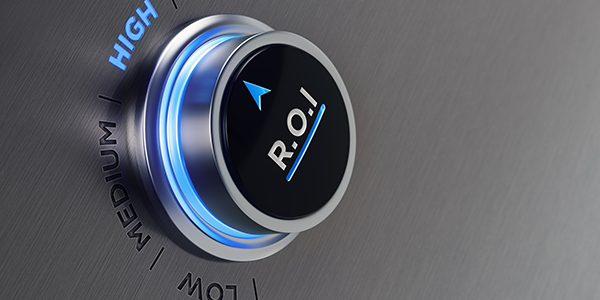 The promise of energy savings makes a strong case for the return on investment (ROI) of energy efficient lighting.
The promise of energy savings makes a strong case for the return on investment (ROI) of energy efficient lighting.
But for those tough-nut customers, more proof might be needed. And if you’re only talking to them about energy savings, you’re not giving them the whole picture.
Which means you might not get the deal.
As a salesperson, you want to have all the tools in the persuasion toolkit. In this article we’ll give you three smart tips you might be missing when talking to customers about all the ways efficient lighting pays them back in ROI. We’ll talk maintenance savings, product lifetime, and even the cost of doing nothing.
Three More Ways Energy Efficient Lighting Creates ROI
-
- Maintenance savings
- Product lifetime and material savings
- Offsets the cost of doing nothing
Maintenance Savings
An investment in LEDs pays off in maintenance savings from lower labor costs.
Have you ever known a customer to keep a running tab of the exact labor costs of daily lighting maintenance? Most just bundle it into overall facility maintenance cost and leave it at that.
But if the maintenance crew is constantly putting out small fires – or in this case replacing bulbs in older fixtures – they may not have time to take care of other maintenance tasks or make headway on bigger projects. Maintaining older fixtures can also require more headcount and the costs that go with it.
Sure, a dripping faucet can wait. But blown bulbs and darkened task areas can grind work to a halt. That means the customer’s maintenance team needs to drop what they were doing to address it. Until they can, that part of the customer’s operation may be disrupted or even shut down—with the meter running. (Feel free to ask your customer how much an hour of downtime costs, by the way.)
With the right numbers and equations, you can calculate the actual maintenance savings the customer can achieve with energy efficient lighting. This can be a powerful motivation to switch.
Product Lifetime and Material Savings
An investment in LEDs pays off in material savings and lower bulb inventory labor costs.
Older lighting fixtures have shorter lifespans compared to the 100,000-hour lifespan of more efficient LED lights:
- Metal halides have a lifespan of 6,000 to 15,000 operating hours.
- Fluorescents typically have a rated lifespan of 7,000 to 15,000 operating hours.
- The chemistry in high pressure sodium (HPS) light bulbs changes over time and they begin cycling and need to be replaced at 24,000 operating hours.
Unfortunately, lights don’t burn out on a convenient schedule (if only!). The customer’s maintenance crew needs to be ready at a moment’s notice for quick replacements. That means they will need to stockpile a supply for every fixture type to have on hand for fast swap outs.
But the cost of a maintaining a supply of replacements, plus the labor cost of managing that inventory, really adds up. Based on the types and number of older bulbs and fixtures in the facility, you can calculate the potential material savings for the customer.
The Cost of Doing Nothing
Customers may assume that sticking with their current lighting fixtures is a neutral choice – nothing lost, nothing gained, right? But as the two previous tips demonstrate, there are hidden costs the customer may not be thinking about, which means staying put is actually costing them.
When you present your proposal for an LED upgrade, pulling all these savings together helps the customer understand everything they have to gain and lose. Like a boxing combination, you want the case for switching to be a knockout.
An investment in an LED upgrade “stops the bleeding” in maintenance and materials costs the customer may not even have realized were accruing by doing nothing.
The Case for Energy Efficient Lighting: Putting It All Together
You can make the most convincing case for LEDs by showing the customer hard numbers based on their own facility:
- Energy savings – Calculate the kW savings of switching to LEDs based on the energy costs in their area to show the impact on their electric bill.
- Maintenance savings – The customer’s maintenance labor cost per hour, and the frequency of bulb replacement given the lifespan, gives you the annual maintenance labor savings.
- Materials savings – Lifespan to lifespan, show the customer how much less they will spend on replacement bulbs, storage space, and bulb inventory labor time each year.
- Cost of doing nothing - Lay out the two options side by side so the customer sees that opting not to switch to LEDs isn’t a no-cost option.
We’ve put together a guide to making the case for the ROI of LEDs in our e-book: How to Sell a Skeptical Customer by Proving ROI. It includes all the numbers and equations you’ll need to calculate bottom line savings numbers that will help you close deals. We also cover how to present savings information based on who the decision maker is, so you’re addressing the right concerns and making the strongest case possible.
By: Kyle Drumhill, Southwest Regional Sales Manager, Litetronics

